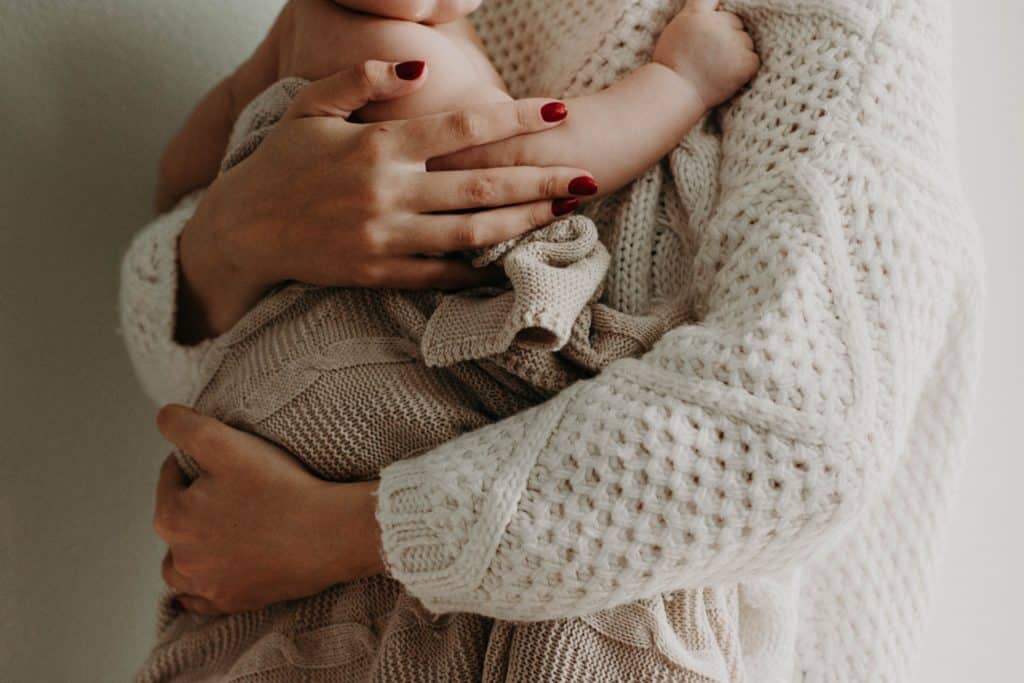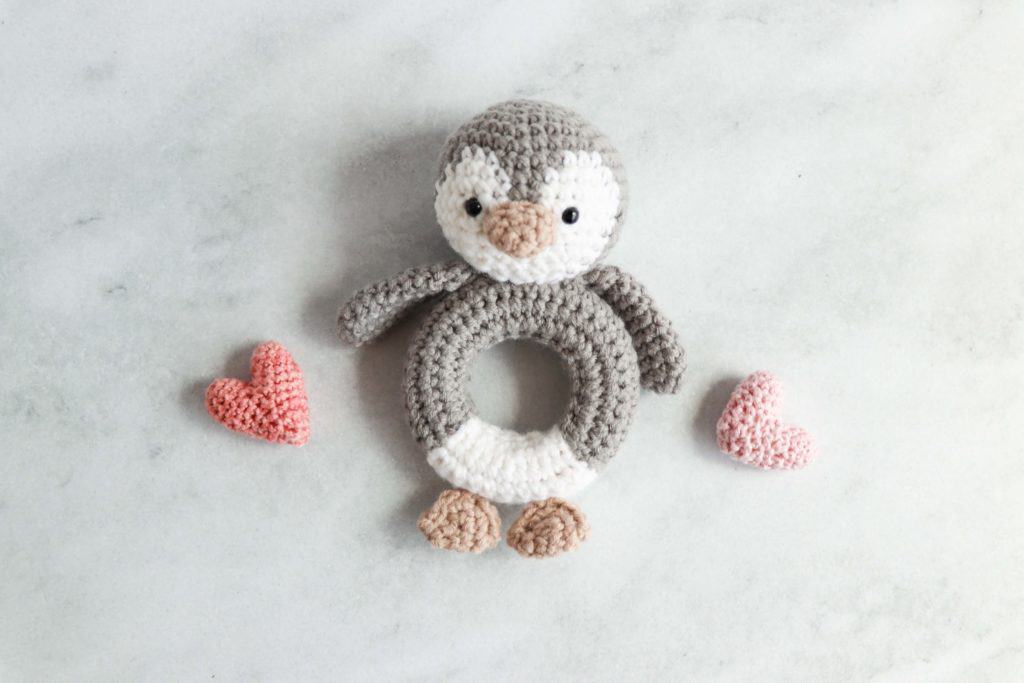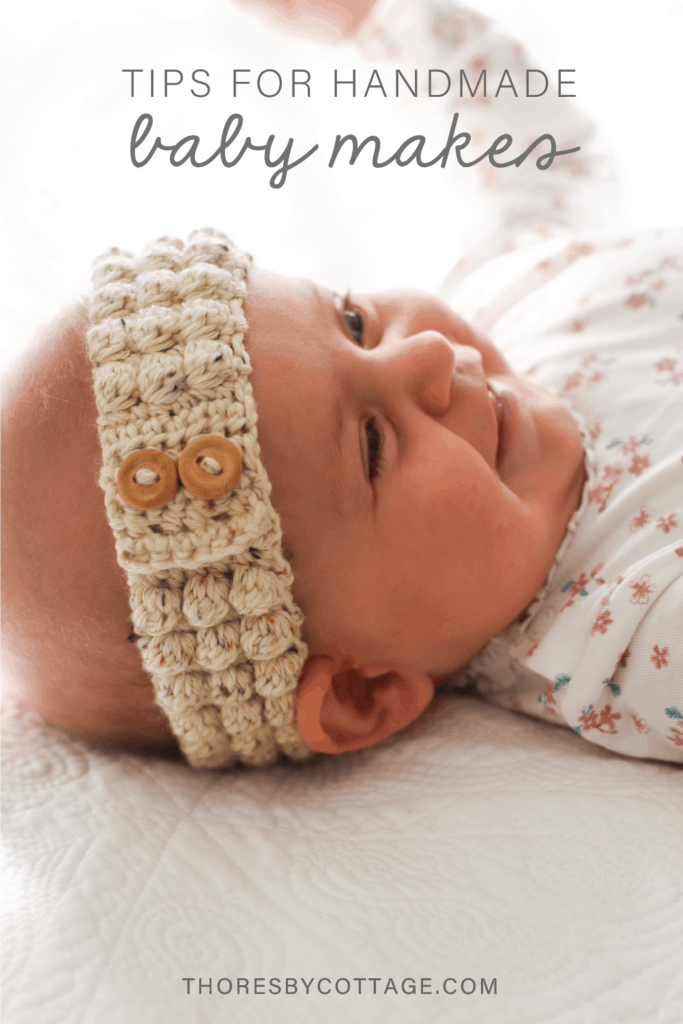Handmade baby items are so special, both to gift and to receive. With all the hard work that goes into creating them, it is worth following these handy guidelines to make sure that your creations are long lasting. Below I’ve outlined a few tips for crocheted and handmade baby makes.

Tips for crocheted and handmade baby makes
1. EASY TO WASH
Let’s face it, kids get mucky! So unless your make is an heirloom piece or a specific request, make sure that it is easy to wash. The handmade items that my little ones used the most were ones that could be easily and thoroughly cleaned. Machine washable* is ideal as a new mum does not have time to hand wash and carefully dry baby items.
For soft toys, choose stuffing that can be easily washed too. You don’t want to fill the toy with wool or down which can felt or clump. No beans or rice to weight the toy either – if these get wet they can go mouldy or even start sprouting! Don’t use paper or card to provide shaping as that will disintegrate if the toy gets wet.
*machine washable is first prize, but hand wash is also ok.
2. CHOOSE YARN CAREFULLY
While that indie dyed wool may be the perfect shade of baby blue, is it the best choice for a baby make? Probably not. The yarn needs to be color fast, machine washable* soft but not flimsy, and certainly not anything that baby may be allergic to.
Cotton or bamboo are great options as they are both breathable and sturdy. Alternatively, a blend of fibres (natural or acrylic) which gives both softness and strength. Please nothing scratchy or allergy prone!
Consider also using new, clean yarn, rather than something thrifted. This may sound snobby, but newborns in particular have very sensitive skin and vulnerable immune systems and you just don’t know where thrifted yarn has been!
3. SIZING
If you are making a wearable, consider making bigger sizes. Babies grow so quickly, and while those teeny tiny booties are just adorable, chances are they will only be worn a couple of times (if that!) before they no longer fit. Baby size can be hugely variable too. My children were both quite small initially, but bigger babies don’t even get to wear newborn clothes.
Don’t skimp on doing a gauge swatch either! Just because the garment is teeny tiny, doesn’t mean that gauge isn’t important.
The style of a garment can also impact its longevity. Personally, I found with my two little ones that I got much more wear out of a cardigan (i.e. button up the front) than a pull over.
Design is something that can really make an impact on your handmaking experience. If you are not confident with identifying a poorly designed pattern, consider using a paid pattern, or at least a pattern from a good designer or well known company.
Now, I’m not saying that all free patterns are bad all, but there lots of duds! Nothing more frustrating than spending lots of time (and possibly money) on a precious item for a little one, only for it to be badly designed.
I have learned this from experience where I spent hours making my son a cable knit jersey from a pattern I found for free. Only to find that the proportions were completely wrong and the pattern was full of mistakes. Needless to say, I found the process very frustrating and disappointing.
Sizing considerations are also worthwhile when making blankets. A slightly bigger blanket has a much longer life span and can last well into the toddler years and beyond.
I’ve listed some of my popular baby patterns below:

4. SAFETY
Safety with baby makes is of the utmost importance. In many countries you actually cannot sell toys or baby items without CE certification (unsure about what CE markings are? Here is an article that explains what it is). Even if you aren’t going to sell your baby items, you need to make sure that they are baby safe.
Safety eyes, despite the name, should be used with caution as they can come undone and pose a choking hazard. I prefer to embroider eyes onto my makes, especially if they are for very young babies. If you do decide to go with safety eyes, make sure to purchase good quality eyes and seal them at the back using the melting technique (used in this pattern here)
Avoid tassels and long strings which can tangle or holes where little fingers can get stuck. Any other haberdashery that needs to be added, such as buttons, zips, toggles, felt pieces etc, need to be firmly attached. Hot glue doesn’t cut it I’m afraid!
Make sure your ends are weaved in well too. I find that using sewing thread to secure the woven in ends is a great way to ensure that they are fastened securely.

5. BEFORE YOU GIFT IT…
- Before you begin crocheting your gift, it’s a good idea to make sure that the receiver doesn’t have any specific allergies or preferences (e.g. only use vegan products, known wool allergies).
- Even though I use clean yarn and I wash my hands before I work, I always like to wash my baby makes before gifting them. It freshens them up and removes any dust and grime that may have inadvertedly got onto my project. Use a mild detergent that is suitable for baby skin, and make sure that the item is thoroughly dry before wrapping it up to gift.
- Don’t forget to include washing and care instructions!
- If you have made a garment, a sizing label is very useful.
- Wrap it beautifully! You have spent all this time making this precious gift, so wrap it to match!
Have I left anything off the list of tips for crocheted and handmade baby makes? Please let me know in the comments!
Yours in craft,
Caitie


Do you wash the handmade rattles before gifting also?
It does depend on the rattle. If it has a wooden ring, or other details that may look ‘worn’ with washing, then I don’t wash them, but rather wipe them down with a wet wipe. If I’m working on a project like that then I also make sure to wash my hands well before I work on it.
Using a whipstitch? I guess I don’t know the type of stitch to look up and learn. I did use thread today on a crochet fishing lure and it looks great!
You can use a whip stitch, but even a running stitch (in and out) works well. Because the thread virtually disappears, you don’t have to be too neat or specific with the stitches. So glad you tried it out!
Can you share details /steps you use to sew in the ends with thread?
I like to use some matching embroidery or sewing machine thread (i.e. thin thread) to secure the ends in place. Thread up a sharp embroidery needle with a single thread and sew the ends in place. You can split the yarn and work small stitches along the area where you have weaved in the ends. Because the thread is thin (and in a matching color) it will disappear into project and hold down the yarn tail really well.